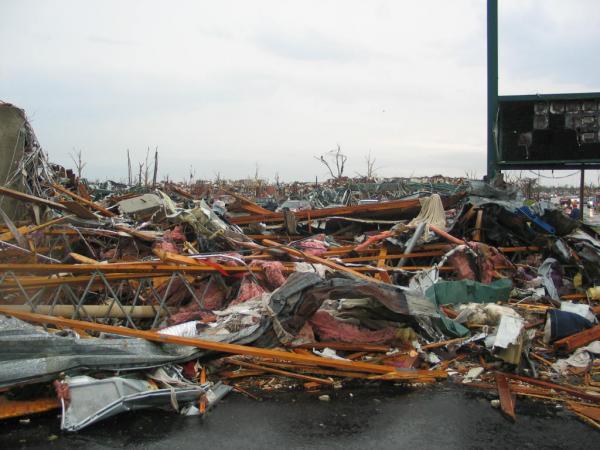
Deadly Tornado Outbreaks Linked to Climate Pattern

Some of the deadliest outbreaks of tornadoes in recent years have been linked to a particular type of climate pattern by a new study. The findings could help forecasters determine when twisters are most likely to strike.
The pattern is called Trans-Niño and is part of the El Niño-Southern Oscillation (ENSO), the climate cycle influenced by surface temperatures in the tropical Pacific, which affects global weather patterns. Trans-Niño occurs most notably when La Niña is winding down in the springtime, and createsconditions favorable for tornadoes in the central and eastern United States, according to the study, published recently in the Journal of Climate.
Scientists looked at 10 of the worst years for tornadoes over the last 60 years, and found that in seven of these years, Trans-Niño conditions were in place, said co-author and University of Miami researcher Sang-Ki Lee. Historical data from several sources also allowed researchers to determine that Trans-Niño was active in the three deadliest years for tornadoes — 1925, 1936 and 1917 — before official counts of tornadoes were recorded, Lee told OurAmazingPlanet.
The Trans-Niño pattern was also in place during the record-breaking tornado season in the spring of 2011, Lee said.
Trans-Niño occurs in the spring and is marked by colder-than-average sea surface temperatures in the central Pacific Ocean and warmer-than-average temperatures in the eastern Pacific.
This pattern helps create winds that blow northward out of the Gulf of Mexico, which increases the likelihood of tornadoes in two ways. First, it increases the transport of moisture into the United States, which fuels the thunderstorms necessary for birthing tornadoes. Second, these low-level northerly winds interact with high-altitude winds blowing from the west, creating swirling vortices. These swirling masses of air can be flipped vertically during updrafts and downdrafts present in large thunderstorms, giving rise to twisters, Lee said.
While Trans-Niño helps create conditions favorable for tornadoes, Lee is quick to point out that it certainly can't explain all or even most tornadoes. "It's dangerous to try to explain all the tornado outbreak events by the impact of climate," he said. "Much of it is due to normal atmospheric variability."
Sign up for the Live Science daily newsletter now
Get the world’s most fascinating discoveries delivered straight to your inbox.
This research could eventually help scientists predict the severity of tornado seasons, "but it won't allow them to predict when and where individual tornadoes might form," Lee said.
Reach Douglas Main at dmain@techmedianetwork.com. Follow him on Twitter @Douglas_Main. Follow OurAmazingPlanet on Twitter @OAPlanet. We're also on Facebook and Google+.










